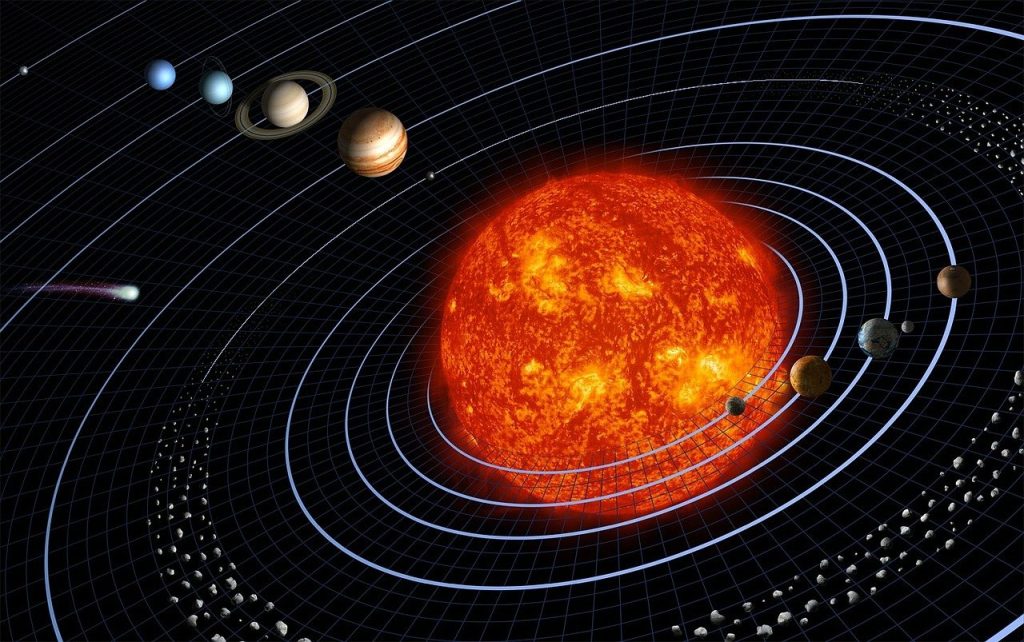Understanding the Center of Our Solar System
Tags: earth, information abour space, sky, sun, the sun
The sun is the center of our solar system and is the source of energy and light that allows life to exist on Earth. Scientists have been studying the sun for centuries, and there is still much to learn about this powerful star. In this article, we will explore the research that has been done on the sun, how it impacts our planet, and what the future holds for solar research.

Table of Contents
- Introduction
- The Sun’s Formation and Characteristics
- Solar Activity and Its Effects on Earth
- Solar Flares and Coronal Mass Ejections
- Solar Wind and Its Impact on Earth
- Sunspot Cycles and Their Impact on Climate
- Space-Based Solar Observatories
- Future Solar Research and Exploration
- Conclusion
- FAQs
The Sun’s Formation and Characteristics
The sun is a massive, glowing ball of gas that formed approximately 4.6 billion years ago. It is made up of mostly hydrogen and helium, with small amounts of other elements. The sun’s size is impressive, with a diameter of approximately 1.4 million kilometers, making it about 109 times larger than Earth.
The sun’s energy is created through the process of nuclear fusion, which occurs at its core. This process releases a tremendous amount of energy in the form of light and heat, which radiates out from the sun and provides energy for life on Earth.
Solar Activity and Its Effects on Earth
The sun’s activity can have a significant impact on Earth. Two types of solar activity that are of particular interest to scientists are solar flares and coronal mass ejections.
Solar Flares and Coronal Mass Ejections
Solar flares are explosions that occur on the surface of the sun. They release a large amount of energy in the form of X-rays and other radiation. These flares can cause disruptions in radio and satellite communications, as well as power outages.
Coronal mass ejections (CMEs) are massive eruptions of material from the sun’s corona, or outer atmosphere. They can release billions of tons of material, traveling at speeds of up to 3 million kilometers per hour. When these particles reach Earth, they can cause auroras and disrupt satellite and communication systems.
Solar Wind and Its Impact on Earth
The sun also emits a constant stream of charged particles, known as solar wind. These particles can interact with Earth’s magnetic field, causing disruptions in satellite and communication systems. However, the Earth’s magnetic field also protects us from the full force of the solar wind.
Sunspot Cycles and Their Impact on Climate
Sunspots are areas of the sun’s surface that appear darker than the surrounding areas. They are caused by magnetic activity and can be up to 50,000 kilometers in size. Sunspot activity follows an 11-year cycle, with periods of high and low activity.
Scientists have found a correlation between sunspot cycles and Earth’s climate. During periods of high sunspot activity, Earth’s temperature tends to be warmer, and vice versa. However, the impact of sunspots on Earth’s climate is still a subject of ongoing research.
Space-Based Solar Observatories
Over the years, scientists have developed increasingly sophisticated tools to study the sun. These include space-based observatories, such as the Solar Dynamics Observatory and the Solar and Heliospheric Observatory. These observatories allow scientists to study the sun’s activity in greater detail and make more accurate predictions about its behavior.
Future Solar Research and Exploration
The study of the sun is a constantly evolving field, and there is still much to learn about this powerful star. Scientists are currently working on new technologies and instruments to study the sun and its impact.
Future Solar Research and Exploration
The study of the sun is a constantly evolving field, and there is still much to learn about this powerful star. Scientists are currently working on new technologies and instruments to study the sun and its impact on Earth.
One area of research is focused on better understanding the sun’s magnetic field and how it drives solar activity. Scientists hope to develop better models of the sun’s behavior, which could lead to more accurate predictions of solar flares and other events.
In addition, there is ongoing research into space-based solar power. This would involve capturing the sun’s energy in space and beaming it down to Earth, providing a clean and renewable source of energy.
Finally, there are plans for future solar exploration missions. In 2024, NASA plans to launch the Solar Probe Plus, which will fly closer to the sun than any previous spacecraft. This mission will provide new insights into the sun’s atmosphere and magnetic field.
Conclusion
The sun is a fascinating and powerful star that has captured the attention of scientists and researchers for centuries. Through ongoing research and exploration, we are learning more about the sun’s behavior and its impact on Earth. As we continue to develop new technologies and instruments, we will be able to study the sun in even greater detail, helping us to better understand this crucial component of our solar system.
FAQs
- Can the sun ever run out of energy?
No, the sun has enough fuel to continue burning for another 5 billion years.
- How does the sun’s magnetic field affect Earth?
The sun’s magnetic field can cause disruptions in satellite and communication systems, as well as impact Earth’s climate.
- Is space-based solar power a viable option for the future?
There is ongoing research into space-based solar power, but it is still a relatively new technology.
- How do scientists study the sun?
Scientists use a variety of tools and instruments, including space-based observatories and ground-based telescopes.
- Why is the sun important?
The sun is the source of energy and light that allows life to exist on Earth. Without the sun, life as we know it would not be possible.